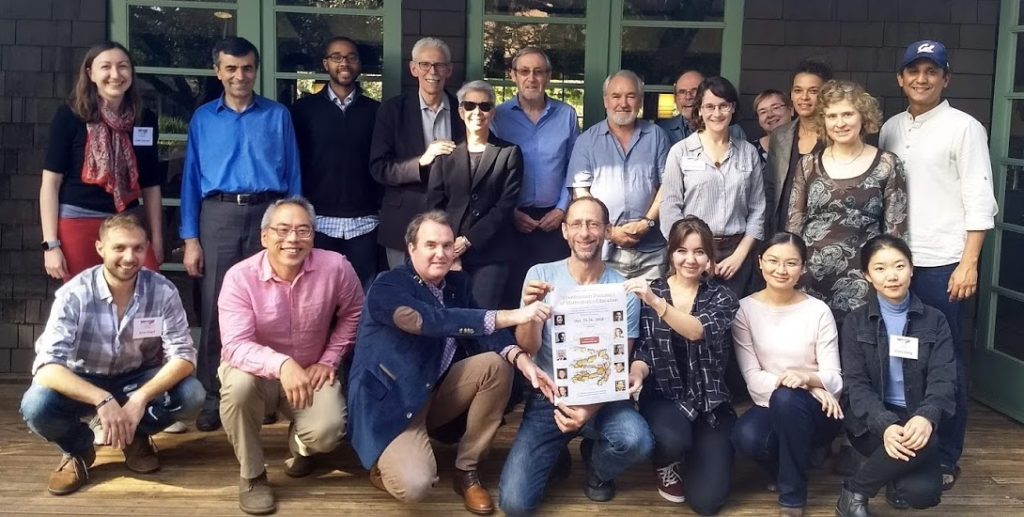
Coordination Dynamics of Mathematics Education
Berkeley Faculty Club, Oct. 25-26, 2018

“Slim Cone Double Helix” by Rafael Araujo
BACKGROUND & OBJECTIVE
CDME brings together leading researchers from the fields of coordination dynamics and mathematics education to explore intersections of their scholarship and ideate interdisciplinary futures. As such, the summit constitutes a milestone in the Embodied Design Research Laboratory’s enduring efforts to excite the broader Learning Sciences community with what we believe are productive conceptual and methodological approaches for achieving empirically validated process explanations of mathematical ontogenesis. Our vision is to infuse enactivist investigations of mathematics cognition, teaching, and learning with complex dynamical system theories of movement learning and control. To date, our collaborative efforts with colleagues in Madrid, Sydney, Utrecht, Jerusalem, and Moscow — as published in CHI (2011), Technology, Knowledge, & Learning (2011,2012), Educational Psychology Review (2015), Educational Studies in Mathematics (in press), ZDM Mathematics Education (2014, 2015, in press), Human Development (2016), For the Learning of Mathematics (2016), Journal of the Learning Sciences (2016), Frontiers in Psychology (2017), Cognitive Research: Principles & Implications (2016), ICLS 2016, IVA 2017, and Movement 2017 — are demonstrating that the movement sciences and somatic practices have much to offer educational researchers informed by the embodiment paradigm shift in the cognitive sciences. To date, our design-research studies have generated process evidence for historical constructs from Piaget, Vygotsky, and Varela pertaining to the dynamical sensorimotor constitution of goal-oriented cognitive structures in natural and cultural ecologies. In particular, by analyzing clinical and eye-tracking data of children’s embodied-interaction with our technology, the Mathematics Imagery Trainer, we have been able to document the emergence of attentional anchors, environmentally coupled subjective perceptual structures that children construct spontaneously as their pragmatic means of facilitating the coordinated enactment of challenging bimanual movements. These attentional anchors become objectified for reflection, description, measurement, quantification, and inscription through the intervention of cultural agents, whether human or artificially intelligent virtual pedagogical tutors. Learning is moving in new ways. New theoretical models as well as new forms of multimodal learning analytics are vital to build and support an emerging big puzzle, a puzzle that comes as a set of scattered pieces but with no clear picture on the box… This mini-conference and workshop will gather and coordinate prominent researchers with relevant expertise who, together, could help us see the big picture by learning to move forward in new ways.
CONVENOR
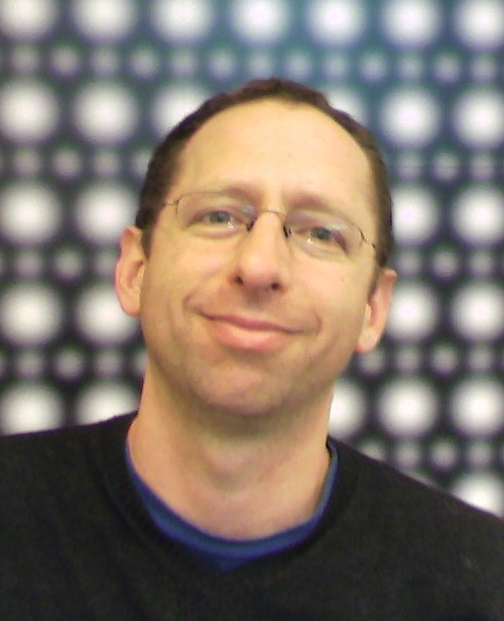
Dor Abrahamson
Graduate School of Education, University of California, Berkeley, USA
Bio: Dor Abrahamson (PhD, Learning Sciences, Northwestern University, 2004) is a design-based researcher of mathematical cognition and instruction at the Graduate School of Education, University of California, Berkeley, where he runs the Embodied Design Research Laboratory. Abrahamson draws on constructivist–enactivist, sociocultural, and dynamical systems theories to inform the design and evaluation of interactive educational materials. In turn, he analyzes empirical data from implementation studies to develop theoretical models of mathematics education and to refine his pedagogical framework, embodied design. Abrahamson has published widely in the leading journals of his field and has received grants from the Spencer Foundation and the National Science Foundation.
PRESENTERS
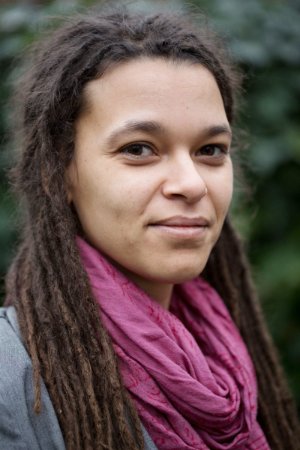
Rosa Alberto
Freudenthal Institute
Utrecht University, The Netherlands
Abstract: The theory of enactivism views cognition as grounded in dynamic multimodal interaction with the environment. How, then, do students learn mathematics, a socio-historical discipline? In collaboration with Dr. Abrahamson at the Embodied Design Research Laboratory at UC Berkeley, Drs. Bakker, Shayan, van der Schaaf, and I study the microgenesis of motoric, perceptual, and cognitive activity that give rise to mathematical notions. Working with a tablet version of the Mathematics Imagery Trainer, our study manipulated task constraints and measured for effects on students’ actions (moves), perceptions (gaze), and reasoning (think-out-loud). Findings include characterizations of coordination dynamics leading up to effective movement, with a focus on the synchronization of gaze, actions, and reasoning. We thus demonstrate how particular pedagogical constraints lead to variability in individual groundings of mathematical ideas.
Bio: Rosa Alberto studied Medicine (Erasmus University Rotterdam, 2011) and Psychology (Leiden University, 2011) and specialized in Cognitive Neuroscience (Research Master, Leiden University, 2014). In her studies she used eye tracking techniques and sequence analyses to investigate children’s and adults’ solution strategies during analogical and mathematical problem solving. Currently, Alberto is a PhD student under supervision of Arthur Bakker and Paul Drijvers at the Freudenthal Institute at Utrecht University, where she plays a leading role in the interdisciplinary project ״Digital Turn in Epistemology.” Building on the collaboration of Abrahamson (Berkeley) and Bakker (Utrecht), Alberto uses the theory of enactivism (embodied, embedded, and extended cognition) to frame the design of interactive digital tasks that require students to move physically in ways that enact dynamically the mathematical concepts they are studying. In the Digital Mathematics Environment (DME) she develops activities that enable students to model their grounded embodied experiences mathematically through the use of digital quantification tools (stylus and rulers). Alberto analyzes the real-time unfolding of students’ behaviors (action, perceptions, reasoning) across tasks to gain insight into cognitive mechanisms as a basis for identifying design heuristics.

Daniel D. Hutto
University of Wollongong, NSW, Australia
Mathematical Cognition in Action
Abstract: New and radically reformative thinking about the enactive and embodied basis of cognition holds out the promise of moving forward age-old debates about whether we learn and how we learn. The radical enactive, embodied view of cognition (REC) poses a direct, and unmitigated, challenge to the trademark assumptions of traditional cognitivist theories of mind—those that characterize cognition as always and everywhere grounded in the manipulation of contentful representations of some kind. REC has had some success in understanding how sports skills and expertise are acquired. But, REC approaches appear to encounter a natural obstacle when it comes to understanding skill acquisition in knowledge-rich, conceptually based domains like hard sciences and mathematics. This paper offers a proof of concept that REC’s reach can be usefully extended into the domain of science, technology, engineering, and mathematics (STEM) learning, especially when it comes to understanding the deep roots of such learning.
Bio: Daniel D. Hutto is Professor of Philosophical Psychology at the University of Wollongong and member of the Australian Research Council College of Experts. He is co-author of the award-winning Radicalizing Enactivism (MIT, 2013) and its sequel, Evolving Enactivism (MIT, 2017). His other recent books, include: Folk Psychological Narratives (MIT, 2008) and Wittgenstein and the End of Philosophy (Palgrave, 2006). He is editor of Narrative and Understanding Persons (CUP, 2007) and Narrative and Folk Psychology (Imprint Academic, 2009). A special yearbook, Radical Enactivism, focusing on his philosophy of intentionality, phenomenology and narrative, was published in 2006. He is regularly invited to speak not only at philosophy conferences but at expert meetings of anthropologists, clinical psychiatrists/therapists, educationalists, narratologists, neuroscientists and psychologists.
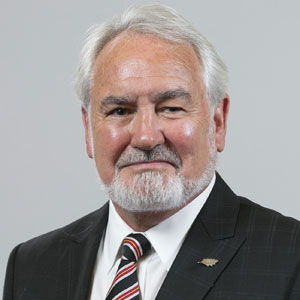
Scott Kelso
Center for Complex Systems & Brain Sciences
Florida Atlantic University, USA
The Laws that Bind Us
Abstract: The famous physicist, Erwin Schrödinger in “What is Life?” a small book that is said to have inspired the field of molecular biology, called for “New laws expected in the organism”. Schrödinger was impressed by the orderliness expressed by living things and proposed an ‘order from order’ principle. Not much attention was paid to this proposition, especially after the discovery of the structure of DNA. Nevertheless, it is an inescapable fact that the behavior of all living things, from the individual cell to the whole organism and even collectives of organisms is coordinated. At all scales it seems nature’s diverse parts form harmonious relations with each other for the preservation of function. So, one may ask, assuming they exist, what might these ‘new’ laws of coordination—the laws that hold us together—look like? And what can they explain? This lecture will have two parts. Using examples that range from cells to fireflies to brains and ballet dancers, the first part will show that laws of coordination are fundamentally self-organized and dynamical: they refer to the flow of (informationally coupled) coordination states in which phase transitions and metastability—a subtle blend of cooperative and competitive tendencies—figure prominently. New results on multiagent coordination show how laws for the coordination of very many elements may be reconciled with laws that deal with just a few elements in a single formulation.
Whereas the first part deals with pattern formation and change in open, complex systems, the second part addresses how spontaneous activity may give rise to properties not usually ascribed to ordinary matter, namely agency and goal-directedness. In response to Schrödinger’s question “What is this “I”? the path explored here is from nonequilibrium phase transitions in matter and movement to the ‘eureka effect’ of experiencing oneself as an agent for the first time. In short, the two parts of the lecture attempt to provide not only a reconciliation of the large and the small, the many and the few, but a reconciliation of the spontaneous (self-organization) and the directed (self-motion). Both aspects may be said to emerge from the laws that bind us.
Bio: For most of his scientific career Scott Kelso has been trying to understand how human beings (and human brains)—individually and together—coordinate their behavior on multiple levels, from cells to cognition to (most recently) social settings. Since the late 1970’s his approach has been grounded in the concepts, methods, and tools of self-organizing dynamical systems tailored to the activities of animate, living things (moving, perceiving, learning, remembering, developing, etc.), a theoretical and empirical framework that has come to be called Coordination Dynamics. From 1978 to 1985 Kelso was Senior Research Scientist at Yale University’s Haskins Laboratories in New Haven, Connecticut. Since then, he has held the Glenwood and Martha Creech Eminent Scholar Chair in Science at Florida Atlantic University (FAU) in Boca Raton, Florida, where he founded The Center for Complex Systems and Brain Sciences. Kelso has held visiting appointments in Moscow, Stuttgart, Lyons, and Marseille, and is Emeritus Professor of Computational Neuroscience at Ulster University in his home town of Derry ~ Londonderry, in the north of Ireland.
Kelso and colleagues’ research has been published in Science and Nature as well as other prominent journals in the fields of neuroscience, physics, biology, and psychology. His books include Dynamic Patterns: The Self-Organization of Brain and Behavior (MIT Press, 1995), Coordination Dynamics (Springer, 2004) and The Complementary Nature (with D.A. Engstrøm) published by MIT Press in 2006. Kelso is a Fellow of APA, APS, SEP, and AAAS, the citation reading “For innovative use of brain imaging and behavioral techniques to uncover the principles and mechanisms of coordination”. He has received a number of honors and awards for his work, including the MERIT, Senior Scientist, and Director’s Innovations Awards from the U.S. National Institute of Health. In 2007 Kelso was named Pierre de Fermat Laureate, and in 2011 he was the recipient of the Bernstein Prize for his work on how the brain controls movement. Kelso was inducted as an Honorary Member of the Royal Irish Academy in 2016. Trained in a specifically interdisciplinary setting, his PhD students and Postdocs have gone on to careers in some of the top academic and research institutions in the world, a fact that he is especially proud of.
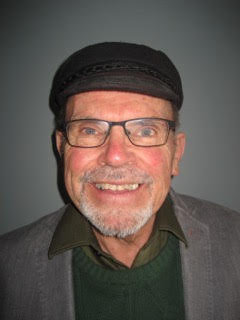
Thomas Kieren
Professor Emeritus
Faculty of Education
University of Alberta, Canada
Abstract: This paper explores the use of a computer based and controlled design, MIT-P, allowing students to physically act with two paddles, Left and Right that registered their vertical positions on the screen when moved and would allow the user to “succeed” in changing the screens red colour into a “green screen” based on the relative vertical positions of the two paddles, which only occurred when the paddle positions (heights from the base) were in a 2 to 1 ratio. Students operated the paddles either singly or in pairs.
The research based on student actions was typically carried out by two researchers carefully observing the student action. This activity reflects the roles of the observers in this research, but one could say that the students necessarily were observers of their actions as well the researchers. Observing patterns in action and observing students enacting such patterns were at the heart of the research on my view. As a third level observer I have used ideas on changes in understanding, particularly by the students as they worked with the MIT-P, based on the Pirie-Kieren Model of Growth in Mathematical Understanding and also recent theorising and research based on enactivism. This observation of actions allowed one to see changes in student understanding of what they were doing mathematically (embodiment), and how they reflected on and abstracted from their patterns of actions.
Bio: Dr. Kieren received has earned a BA in Mathematics (Carleton College, 1962), an MA in Mathematics (Northwestern University, 1966), and a PhD in Mathematics Education (with a minor in Mathematics, University of Minnesota, 1968). His PhD thesis, “Using Computer Programming (BASIC) in Teaching and Learning Grade 11 Mathematics,” was one of the first if not the first thesis on using programming for high-school students to learn mathematics. Beginning in 1967, Dr. Kieren served for 30 years as professor of mathematics education at the University of Alberta, where he taught mathematics educations courses and carried out various research projects.
My programme of research was based in classrooms from Grade 3 to high school, almost always with an emphasis on observing students using various physical materials in interactive environments to prompt their development of mathematical objects and ideas. I have been most well known for my research on fractional and rational number learning, using various materials to stimulate student thought/actions and learning. My 1976 paper, “On the Mathematical, Cognitive and Instructional Foundations of Rational Numbers,” has been widely used by researchers. Another program, with Susan Pirie of Oxford and later UBC, entailed the development of a “Dynamical theory of growth in mathematical understanding in children and young adults.” Related research has typically entailed observing student actions and interactions. My most recent work – rather a pulling together of ideas from previous research – has used Maturana and Varela’s ideas relating to learning entailing bringing forth, with others, a world of mathematical significance, which necessarily entails observing student actions and inter-actions.
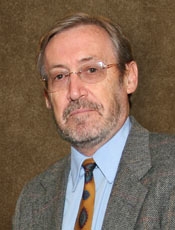
Karl Newell
Department of Kinesiology
University of Georgia, USA
Augmented information for qualitative and quantitative change: Clues from the movement domain
Bio: Dr. Newell was born and raised in Brighton, England. He completed undergraduate studies at the former Loughborough College of Education and graduate degrees in Physical Education at the University of Illinois at Urbana-Champaign (UIUC). He was Professor and Head of Kinesiology at UIUC and Professor and the Marie Underhill Noll Chair in the Department of Kinesiology at The Pennsylvania State University, USA. He is now professor of Kinesiology at the University of Georgia.
Dr. Newell’s research interests lie in the area of human movement in general and more specifically in motor learning and control. His research focuses on the coordination, control and skill of normal and abnormal human movement across the lifespan; intellectual disabilities and development and motor skills; and, drug and exercise influences on movement control. One of his major themes of research is motor learning across the life span with an emphasis on the information for and dynamics of change in coordination, control and skill of learning and development. The other major theme of his research is the study of variability in human movement and posture with specific reference to the onset of aging and Parkinson’s disease. He has over 400 publications in a range of journal articles, book chapters and books. He has had essentially a career of external funding from primarily NIH and NSF.
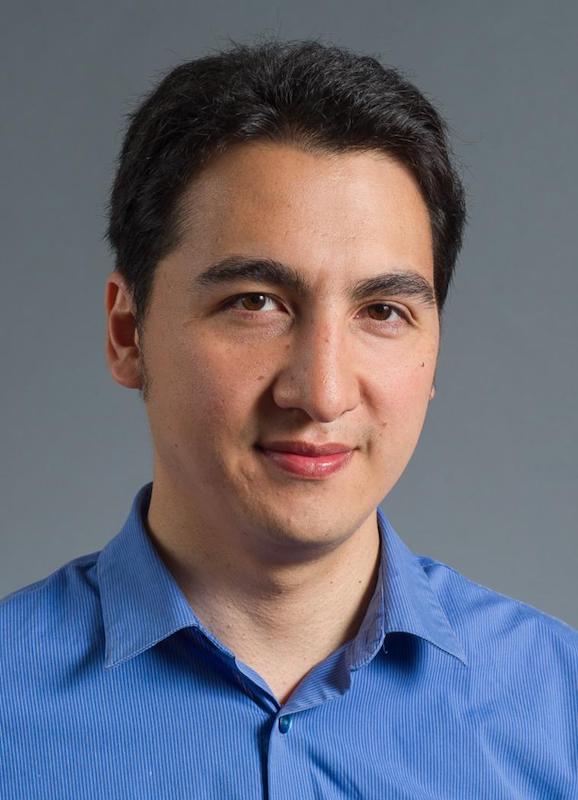
Zach Pardos
Graduate School of Education and the School of Information
University of California, Berkeley, USA
Abstract: As learner interactions increasingly involve digital components, the availability of data traces of the learning process increases; and with it, opportunities to study cognitive externalities of the mind in big data. In this talk, I will present results surfacing behaviorally informed semantics about items and common wrong answers in online STEM tutoring platforms, learned from millions of problem responses, and semantics about the relationships between university courses, learned from millions of enrollments. A connectionist (i.e., neural network) AI model is applied to observe these many learner behaviors and form representations of the objects interacted with, which can then be validated and explored for emergent semantics. I will discuss these models as revealing possible new landscapes of learning to be studied and their implications for improved online pedagogy.
Bio: Dr. Pardos is an assistant professor in the Graduate School of Education and School of Information at UC Berkeley. His work focuses on knowledge representation and engineering personalized supports leveraging big data from educational contexts. His active grants from the National Science Foundation have catalyzed the study of emergent semantics stemming from connectionist models of learner behavior. He earned his PhD in Computer Science from Worcester Polytechnic Institute funded by an NSF Graduates in K-12 Fellowship (GK12), during which he spent extensive time with K-12 educators and students working to integrate educational technology into the curriculum as a formative assessment tool. He holds several academic leadership positions in the learning analytics community, including posts as an editorial board member for two of its journals (JEDM and IJAIED), executive committee member for the Artificial Intelligence in Education Society, and program committee member of the 2018 education conferences; ICLS, ITS, LAK, EDM, AIED and L@S. Dr. Pardos came to UC Berkeley in 2013 after a post-doc at MIT’s Computer Science Artificial Intelligence Lab (CSAIL), exploring models of cognitive mastery applied to learner process data from, then nascent, large scale online courses. At UC Berkeley, he directs the Computational Approaches to Human Learning (CAHL) research lab and teaches courses on data mining and analytics, digital learning environments, and machine learning in education.

Anna Shvarts
Lomonosov Moscow State University, Russia
Abstract: The cultural–historical scientific approach to educational phenomena conceptualizes processes of teaching/learning as the guided development of higher psychological functions that are socially originated and systemically structured. Students’ capacity to perceive and act upon instructional material in a culturally appropriate way emerges through student–tutor collaboration. The student then gradually becomes capable of performing the new mathematical activity independently. Our micro-genetic analyses of dual-eye-tracking data from multiple teaching/learning episodes focus on apparent shifts from student–tutor intersubjective coordination on a visual display to students’ enculturated mathematical enactment. The results offer compelling evidence for the cultural–historical model of mathematics teaching/learning as an irreducibly collaborative, systemic, multi-level process congruent with complex dynamical system theory of movement.
Bio: Dr. Shvarts is a Senior Researcher in the Faculty of Psychology at Lomonosov Moscow State University, where she investigates the genesis of cultural thinking and perception using a variety of methodologies, including twins studies, semi-structured interviews with blind and visually impaired students, classroom teaching experiments, and laboratory cognitive experiments. In her recent work, Dr. Shvarts has been developing dual-eye-tracking instruments for the micro-analysis of tutor-student collaboration. She has also taught mathematics and visual art to children of diverse ages and abilities, worked at schools as a neuropsychologist, and led the pedagogical department of a commercial online educational platform Uchi.ru (Happynumbers.com) that currently has more than a million subscribers in Russia and beyond. Dr. Shvarts is the Principal Investigator recipient of a Russian Foundation for Basic Research grant, “The study of student–teacher joint attention micro-dynamics by dual eye-tracking methods.” Recently, she contributed a chapter to the ICME-13 Monograph “Signs of Signification: Semiotics in Mathematics Education Research” (2018; Co-Editors Presmeg, Radform, Roth, & Kadunz).
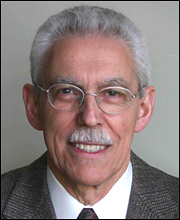
Michael Turvey
University of Connecticut: Center for the Ecological Study of Perception and Action and Haskin Laboratories, USA
Abstract: In Essay Toward a New Theory of Vision (1709), George Berkeley hypothesized that an individual’s awareness of distance travelled is derivative of “the motion of his body, which is perceivable by touch.” For legged animals that locomote with 2, 4, 6, or 8 legs there is, indeed, evidence to suggest that their legged activity not only gets them from A to B but also provides a nonvisual measure of the distance from A to B that is invariant over variations in speed, duration, and number of steps. Legged locomotion functions as a biological odometer. Each of the different forms of n-legged locomotion can be classified by the group symmetry of the minimal network of identical differential equations (alias cells) required to model it. For human gaits (n = 2), dihedral symmetry characterizes the so-called primary forms (e.g., walk, run), and a (lower) cyclic symmetry characterizes the so-called secondary forms (e.g., skip, gallop). In tests of human odometry, the blindfolded reported distance R equals the blindfolded measured distance M only when the symmetry of measure and report gaits is the same. Switching symmetry classes at report compresses (primary to secondary) or inflates (secondary to primary) measured distance, with the compression and inflation equal in magnitude. To model the dynamics of human odometry, where the behaviors are executed sequentially, we draw lessons from modeling the dynamics of inter-limb coordination, where the behaviors are executed in parallel. In particular, the major observations are characterized in terms of a dynamics of sequentially coupled measure and report phases, with relative velocity as an order parameter, or equilibrium state, and difference in symmetry class as an imperfection parameter, or detuning, of that dynamic. In short, the organization of the M-R instrument is understandable in terms of nonlinear and self-organizing processes.
Bio: Turvey received his Ph.D. from Ohio State University in 1967. He joined the University of Connecticut in 1967 and the Haskins Laboratories in 1970. His awards include a Guggenheim Fellow, the American Psychological Association (APA) Early Career Award, Fellow at the Center for Advanced Study in the Behavioral Sciences, Cattell Fellow, Honorary Doctorates from Free University of Amsterdam and Florida Atlantic University, APA Distinguished Scientist Lecturer, Board of Trustees Distinguished Professor (University of Connecticut), Fellow of the Society of Experimental Psychologists, American Psychological Foundation F. J. McGuigan Lecturer, Fellow Japan Society for the Promotion of Science, Ohio State University Distinguished Alumnus, President of the International Society of Motor Control, 2009 Bernstein Prize in Motor Control, 2011 Society of Experimental Psychologists Lifetime Achievement Award, 2012 Glushko & Samuelson Distinguished Cognitive Scientist Award, Ohio State University Education Career Achievement Award, the Association for Psychological Science (APS) inaugural Lifetime Mentor Award. He has published 410 scientific articles, produced 46 Ph.D.s, as primary advisor and 16 Ph.D.s as secondary advisor, taught more than 27,000 undergraduates, and given 160 invited colloquia. His research on visual word recognition pursues the key role of phonology in reading identified by Alvin and Isabelle Liberman. His research on perception and action and their inter-relation follows James Gibson and Nicholai Bernstein in emphasizing the search for general laws and principles. His efforts in this regard are founded on the self-organizing physical principles articulated (in contrasting ways) by Iberall, Prigogine, and Haken. His current research emphasis is on physical intelligence, an explanation of intentional behavior or agency from first principles. He became Professor Emeritus in 2008. He was recognized by Marquis Who’s Who in America in 2017.
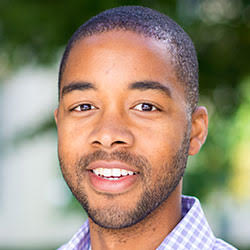
Marcelo Worsley
School of Education & Social Policy
Northwestern University, USA
Multimodal Learning Analytics for Examining Coordination Dynamics in Mathematics
Abstract: Multimodal learning analytics refers to a set of computational techniques that leverage the affordances of multimodal sensors (cameras, microphones, eye trackers, electroencephalography and more). These sensors provide a means for tapping into cognitive, physiological, physical and emotional indicators that can help researchers better understand the complexity of coordination dynamics. Furthermore, the area of multimodal learning analytics explores various paradigms for fusing and interpreting this data. This talk will highlight some concrete examples for how to realize the opportunities provided through multimodal learning analytics and propose some future directions for work in this area.
Bio: Marcelo Worsley is an assistant professor of Learning Sciences and Computer Science at Northwestern University. Marcelo conducts work at the intersection of making, and multimodal interfaces and analysis. He directs the technological innovations for inclusive learning and teaching (tiilt) lab, which aims to develop pedagogic and technological solutions for supporting learning among diverse populations in hands-on environments. More specifically, the goal of his research is to advance society’s understanding of how students learn in complex learning environments by forging new opportunities for using multimodal technology. The use of multimodal technology is two-fold. First, the environments that he studies allow students to experience learning across a range of modalities. Second, he uses multimodal signal processing and artificial intelligence to study how student learning is demonstrated across different modalities and time scales. Worsley has more than a decade of experience doing work with diverse populations in Makerspaces, and other constructionist-oriented environments
PROGRAM
Wednesday Oct. 24 — un-planned evening
(recommended: Comal, 2020 Shattuck Ave, Berkeley, CA 94704)
Thursday Oct. 25 @ Faculty Club
8:00 gather + breakfast
8:30 Abrahamson (welcome)
8:45 Alberto
9:45 Newell
10:45 coffee
11:00 Shvarts
12:00 interactivity
12:30 lunch (at FC, everyone)
1:30 Kelso
2:30 Kieren
3:30 coffee + interactivity
4:00 Turvey
5:00 END
6:30dinner Great China (delegates + select invitees), 2190 Bancroft Way, Berkeley, CA 94704
Friday Oct. 26 @ Faculty Club
8:00 gather + breakfast
8:20 Abrahamson (opening words)
8:30 Worsley
9:30 Pardos
10:30 coffee + interactivity
11:15 Hutto
12:15 lunch (at FC, everyone)
1:15 panel
2:00 coffee + interactivity… last schmooze
2:45 Abrahamson (closing words)
3:00 END
ACKNOWLEDGEMENTS
This event is funded by a $10K award (Abrahamson) from Vice Chancellor for Research, University of California, Berkeley. Abrahamson extends his gratitude to all UC Berkeley’s Graduate School of Education staff who were critical in the organization of the meeting, foremost Ms. Maggie Cassell, as well as the EDRL graduate students involved in facilitating this event. The artwork on this website and the posters is a licensed copy purchased from Rafael Araujo, Venezuela
